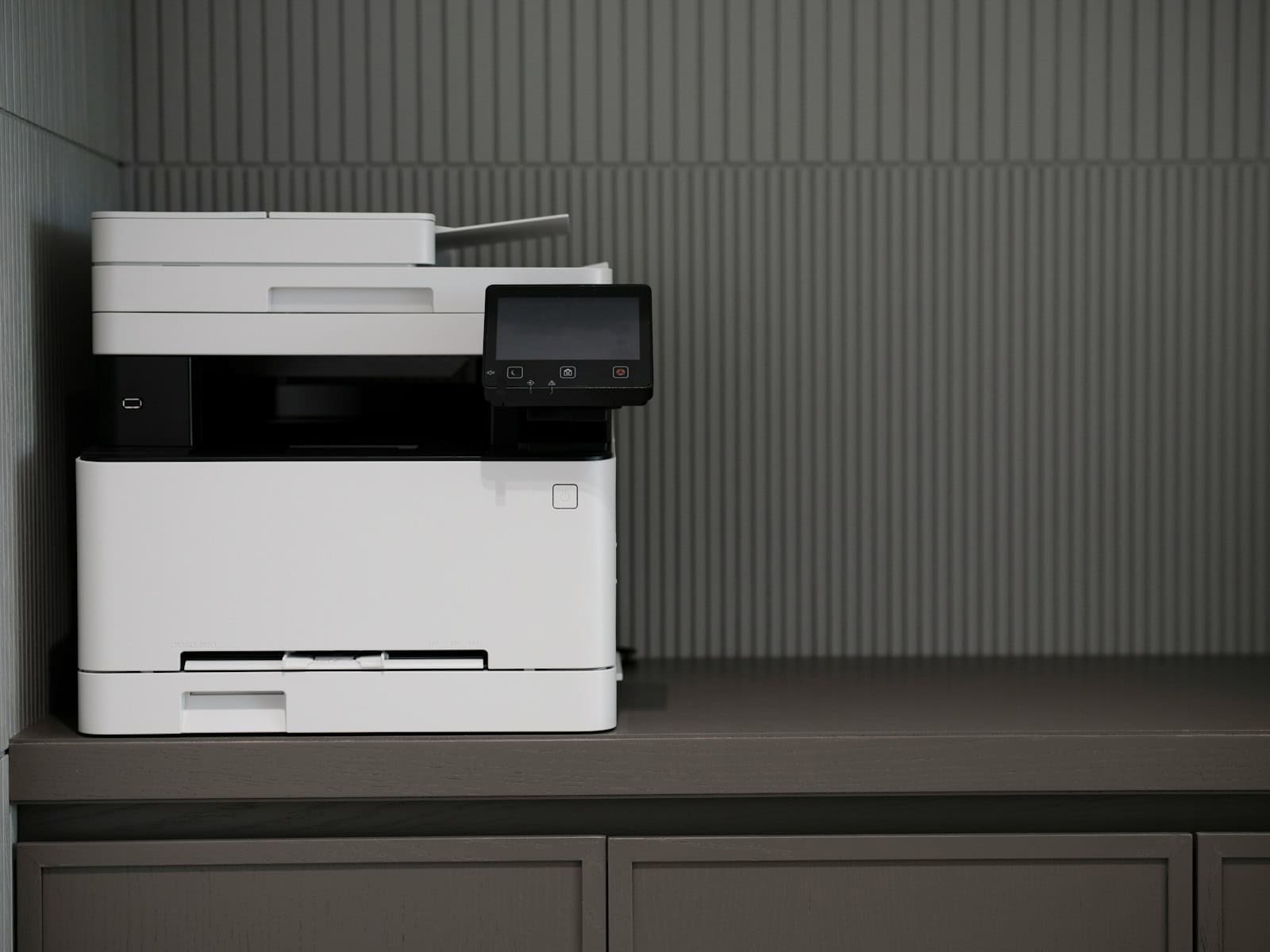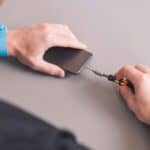Finding a printer’s MAC address is a simple process that can solve many network connectivity issues. The MAC address, or Media Access Control address, is a unique identifier for your printer’s network interface. This 12-character code helps your computer and router recognize the printer on the network.
Locating your printer’s MAC address can be done in several ways. Most printers have a built-in menu that displays network information, including the MAC address. You can also print a network configuration page, which usually contains this vital information. For those who prefer using their computer, the command prompt offers another method to find the MAC address.
Knowing your printer’s MAC address is useful for network troubleshooting and setting up printer-specific network rules. It allows you to identify your printer on the network quickly and can help in diagnosing connectivity problems. This knowledge is particularly valuable in office environments with multiple printers or when configuring advanced network settings.
Finding the MAC Address of Your Printer
A printer’s MAC address (Media Access Control address) is a unique identifier used for network communication. You might need it for network configuration, troubleshooting, or access control. Here’s how to find the MAC address of your printer:
1. Check the Printer Itself
- Physical Label: Many printers have a sticker or label on the back or bottom that lists the MAC address, often labeled as “MAC Address,” “Wireless Address,” “Physical Address,” or “Ethernet Address.”
- Built-in Menu: Some printers have a network settings menu accessible through the printer’s control panel. Navigate through the menu to find the network configuration or information section, which should display the MAC address.
2. Use Your Computer (Windows)
- Control Panel:
- Open the Control Panel.
- Go to “Devices and Printers” or “View devices and printers.”
- Right-click on your printer and select “Properties.”
- Go to the “Ports” or “Hardware” tab. The MAC address might be listed there or within the port details.
- Command Prompt:
- Open the Command Prompt as administrator.
- Type
ipconfig /alland press Enter. - Look for your printer in the list of connected devices. The MAC address will be listed as “Physical Address.”
3. Use Your Computer (Mac)
- System Preferences:
- Open System Preferences.
- Go to “Printers & Scanners.”
- Select your printer.
- Click on “Options & Supplies.”
- Go to the “General” tab. The MAC address might be listed there.
4. Check Your Router’s Configuration Page
- Access the router’s settings: Open a web browser and enter your router’s IP address (usually found on the router itself or in your network settings).
- Common router IP addresses include: 192.168.1.1 or 192.168.0.1
- Log in: Enter your router’s username and password.
- Find connected devices: Look for a section that lists connected devices or network map. Your printer should be listed there with its MAC address.
5. Print a Network Configuration Page
- Printer’s control panel: Many printers have an option to print a network configuration page directly from the control panel. This page typically includes the printer’s network settings, including the MAC address.
- Printer driver software: You might also be able to print a network configuration page through your printer’s driver software installed on your computer.
By following these methods, you should be able to locate the MAC address of your printer. If you’re still having trouble, consult your printer’s user manual or contact the manufacturer’s support for assistance.
Key Takeaways
- The MAC address is a unique 12-character code that identifies your printer on a network
- Printers often display the MAC address in their built-in menu or on a printed configuration page
- Finding the MAC address helps with network troubleshooting and printer setup
Identifying Your Printer’s Mac Address
Finding a printer’s MAC address is crucial for network setup and troubleshooting. This unique identifier helps connect the printer to your network and resolve connectivity issues.
Using the Printer’s Configuration Page
Most printers can print a configuration page containing network details. To access this:
- Locate the printer’s menu button or touchscreen.
- Navigate to “Settings” or “Network Configuration.”
- Select “Print Configuration Page” or a similar option.
The printed page will display the MAC address, often labeled as “Physical Address” or “Hardware Address.” It typically appears as a 12-digit hexadecimal number, such as 00:1A:2B:3C:4D:5E.
Some printers allow viewing the MAC address directly on their display screen. Check your specific model’s menu options for this feature.
Utilizing the Command Prompt
Windows users can find a printer’s MAC address through the Command Prompt:
- Press Windows key + R, type “cmd”, and hit Enter.
- Type “arp -a” and press Enter.
- Look for your printer’s IP address in the list.
- The corresponding MAC address will be in the “Physical Address” column.
For this method to work, ensure your printer is on and connected to the network. If the printer doesn’t appear, try pinging its IP address first:
- Type “ping [printer’s IP address]” in the Command Prompt.
- Then run the “arp -a” command again.
This approach is useful for network-connected printers when physical access is limited.
Consulting the Printer’s Manual
The printer’s user manual often contains information about finding the MAC address. Check the manual’s network setup or troubleshooting sections.
If you’ve misplaced the physical manual, most manufacturers offer digital versions on their websites. Search for your printer model and “user manual” to find it.
The manual may provide model-specific instructions for accessing the MAC address through the printer’s interface or alternative methods not covered by general guidelines.
Addressing Connectivity and Network Issues
Network problems can hinder access to a printer’s MAC address. Troubleshooting these issues often involves checking wireless connections and adjusting network settings.
Resolving Wireless Network Problems
Weak Wi-Fi signals or interference can disrupt printer connectivity. Check the printer’s distance from the router and remove obstacles between them. Reboot both the printer and router to refresh connections.
Update the printer’s firmware to fix known bugs. Verify the printer is connected to the correct network. Some printers have a Wi-Fi test function to diagnose connection issues.
Consider using a Wi-Fi extender if signal strength is consistently low. Changing the router’s wireless channel can reduce interference from other devices.
Adjusting Network Interface Settings
Incorrect network settings can prevent MAC address retrieval. Ensure the printer has a valid IP address assigned by DHCP or set manually.
Check that the subnet mask and default gateway match the network configuration. Some printers allow switching between static and dynamic IP addressing.
Disable any firewalls or antivirus software temporarily to rule out blocking. Verify the printer’s network port (usually 9100) is open on the router.
Review the printer’s network logs for error messages. Reset the printer’s network card if persistent issues occur.
Frequently Asked Questions
Locating a printer’s MAC address can be done through various methods, depending on the printer model and available access. These methods range from using the printer’s control panel to utilizing Windows tools.
How can I locate the MAC address of my HP printer?
HP printers often provide the MAC address through their control panel. Navigate to the network settings menu on the printer’s display. Look for an option to print a network configuration page. This page typically includes the MAC address among other network details.
What steps do I take to find the MAC address of a Canon printer?
Canon printers usually allow access to the MAC address through the printer’s menu system. Press the Menu button and navigate to the Network Settings or System Information. Select the option to print a network status sheet, which will display the MAC address.
Is it possible to obtain a printer’s MAC address using Windows 10?
Windows 10 offers multiple ways to find a printer’s MAC address. Open the Settings app and go to Devices > Printers & scanners. Select the printer and click on “Manage”. Choose “Printer properties” and look for the “Ports” tab. The MAC address may be listed here.
Can I find a printer’s MAC address using the command prompt?
Yes, the command prompt can be used to find a printer’s MAC address. Open Command Prompt and type “arp -a”. This displays a list of devices on the network, including their IP and MAC addresses. Identify the printer’s IP address to find its corresponding MAC address.
What procedure is followed to remotely access a printer’s MAC address?
Remote access to a printer’s MAC address often involves using network management tools. Many printers have web interfaces accessible through a browser. Enter the printer’s IP address in the browser to access its settings page, which often includes network information and the MAC address.
How to determine the MAC address of a printer without it being directly connected?
Network scanning tools can help find the MAC address of a printer not directly connected. Use software like Advanced IP Scanner or Angry IP Scanner to scan the network. These tools display devices on the network along with their IP and MAC addresses.





